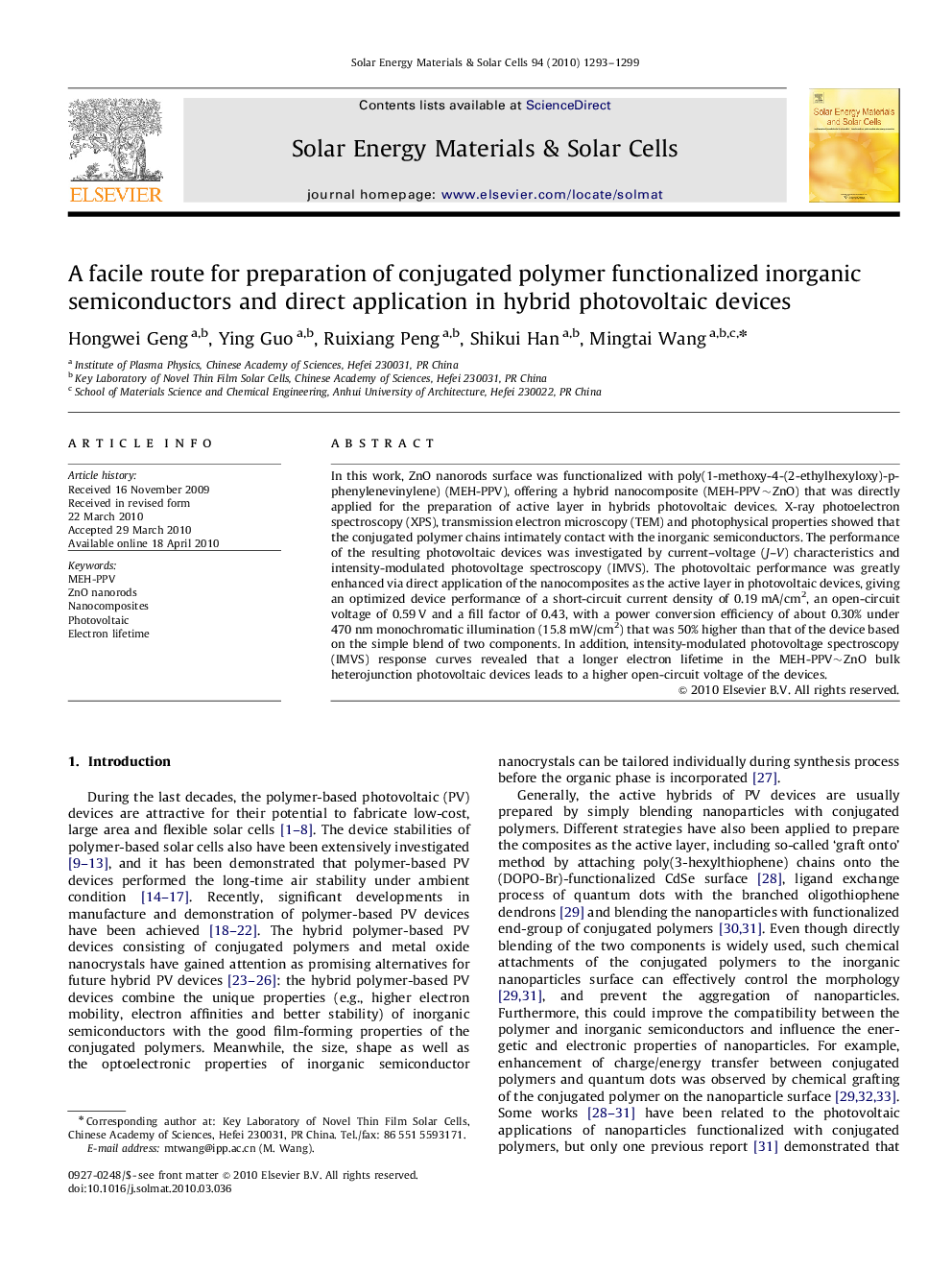| Article ID | Journal | Published Year | Pages | File Type |
|---|---|---|---|---|
| 79455 | Solar Energy Materials and Solar Cells | 2010 | 7 Pages |
In this work, ZnO nanorods surface was functionalized with poly(1-methoxy-4-(2-ethylhexyloxy)-p-phenylenevinylene) (MEH-PPV), offering a hybrid nanocomposite (MEH-PPV∼ZnO) that was directly applied for the preparation of active layer in hybrids photovoltaic devices. X-ray photoelectron spectroscopy (XPS), transmission electron microscopy (TEM) and photophysical properties showed that the conjugated polymer chains intimately contact with the inorganic semiconductors. The performance of the resulting photovoltaic devices was investigated by current–voltage (J–V) characteristics and intensity-modulated photovoltage spectroscopy (IMVS). The photovoltaic performance was greatly enhanced via direct application of the nanocomposites as the active layer in photovoltaic devices, giving an optimized device performance of a short-circuit current density of 0.19 mA/cm2, an open-circuit voltage of 0.59 V and a fill factor of 0.43, with a power conversion efficiency of about 0.30% under 470 nm monochromatic illumination (15.8 mW/cm2) that was 50% higher than that of the device based on the simple blend of two components. In addition, intensity-modulated photovoltage spectroscopy (IMVS) response curves revealed that a longer electron lifetime in the MEH-PPV∼ZnO bulk heterojunction photovoltaic devices leads to a higher open-circuit voltage of the devices.
